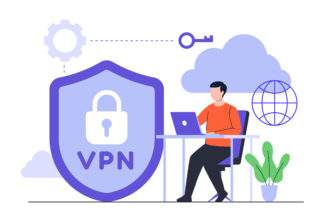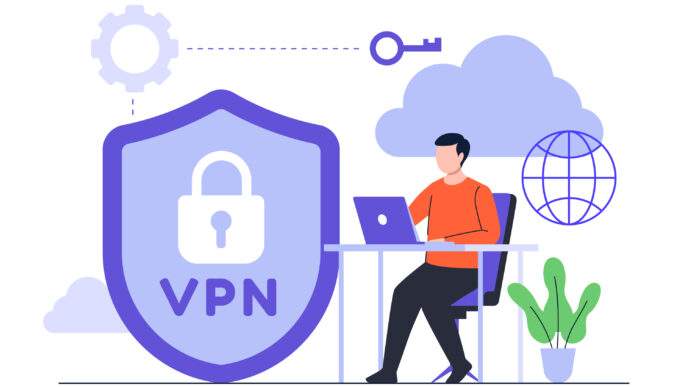Running a Bitcoin Lightning Node can significantly enhance your experience by enabling faster transactions and reducing fees. But what exactly do you need to get started? We break down all the requirements for a Lightning Node, from hardware specifications to software needs and ongoing maintenance considerations.
The Basics
Before diving into specific requirements, it’s important to understand what a Lightning Node actually is. A Lightning Node is a software implementation that connects to the Bitcoin Lightning Network, allowing users to conduct off-chain transactions that are faster and cheaper than standard on-chain Bitcoin transactions.
The Lightning Network functions as a “layer 2” protocol built on top of the Bitcoin blockchain, designed to address bitcoin’s scalability issues by enabling near-instant micropayments between participating nodes.
Types of Lightning Nodes
There are three primary types of Lightning Nodes, each serving different purposes:
- Routing Nodes: These specialized nodes focus on routing payments between other nodes in the network, serving as intermediaries that find efficient payment paths.
- Merchant Nodes: Operated by businesses that accept bitcoin payments, these nodes enable quick and low-cost processing of customer transactions.
- Personal Nodes: Run by individual users who want to participate in the Lightning Network, these nodes allow direct sending and receiving of payments.
Your specific requirements may vary slightly depending on which type of node you intend to operate.
Hardware Requirements For A Lightning Node
The hardware needed to run a Lightning Node varies based on your specific goals and budget. Here are three common setups:
High-Performance Setup (Full Node + Active Routing)
For those serious about running both a full bitcoin node and an active Lightning routing node:
- CPU: 8+ cores (AMD Ryzen 7700X or similar).
- RAM: 64GB DDR5 (expandable to 128GB).
- Storage: 2x 1TB NVMe SSDs (approximately 600GB+ is needed for a full bitcoin node).
- Network: 3Gbps uplink with substantial monthly traffic allowance (100TB+).
This setup is ideal for those looking to actively participate in routing transactions and potentially generate income.
Mid-Range Setup (Pruned Bitcoin Node + Lightning)
For users wanting a balance of performance and cost:
- CPU: 4 vCores
- RAM: 8GB
- Storage: 160GB NVMe SSD
- Network: 1Gbps unmetered connection
This configuration works well with a pruned bitcoin node, which requires significantly less storage than a full node while still allowing Lightning functionality.
Budget Setup (Lightning-Only with Remote Bitcoin Node)
For beginners or those on a tight budget:
- CPU: 2 vCores
- RAM: 4GB
- Storage: 80GB SSD
- Network: 100Mbps+ unmetered connection
This minimal setup works by connecting to a remote bitcoin node rather than running your own, focusing solely on Lightning operations.
For Core Lightning specifically, the bare minimum requirements are 4GB RAM and either 500GB storage (for a full bitcoin node) or less than 5GB (for a pruned node).
Software Requirements For A Lightning Node
Running a Lightning Node requires specific software components:
1. Operating System
Lightning Node software is primarily designed for:
- Linux (most common and recommended).
- macOS (supported by most implementations).
- Windows (typically requires Docker for compatibility).
Linux distributions like Ubuntu or Debian are most commonly used due to their stability and compatibility with Lightning software.
2. Bitcoin Core
Since the Lightning Network operates on top of bitcoin, you’ll need a bitcoin node:
- Full Bitcoin Node: Requires downloading the entire blockchain (600GB+ and growing).
- Pruned Node: Stores only a portion of the blockchain, requiring less storage.
- Remote Node Connection: Uses someone else’s bitcoin node (less secure but easier setup).
Bitcoin Core should be fully synced with your chosen network (mainnet or testnet).
3. Lightning Implementation
Several Lightning Network implementations exist, with the most popular being:
- LND (Lightning Network Daemon): The most widely used implementation.
- Core Lightning (formerly c-lightning): Developed by Blockstream.
- Eclair: Created by ACINQ.
Each has different features and configurations, but they all serve the same fundamental purpose.
4. Additional Utilities
- SSH/Terminal access: For remote management.
- Firewall configuration: To secure your node.
- Monitoring tools: To track node performance and channel status.
Network Requirements
Proper network configuration is crucial for a functioning Lightning Node:
- Port 9735: Standard Lightning port that needs to be open for incoming connections.
- Ports 8080 and 10009: Used for REST and RPC interfaces (should be restricted to trusted networks).
- Stable Internet Connection: A consistent connection is essential to maintain channel availability.
- Static IP or Dynamic DNS: To ensure your node remains discoverable.
Security Requirements For A Lightning Node
Lightning Nodes manage actual funds, making security paramount:
1. Physical Security
- Secure the physical device hosting your node.
- Be mindful of who can access the hardware.
2. Network Security
- Use firewalls to limit exposure to your platform.
- Consider making sensitive endpoints only available inside trusted networks.
- Connect to your node only via SSH or a VPN.
- Configure your platform to use keys for authentication, not passwords.
3. Software Security
- Regularly update your operating system and all services.
- Keep your Lightning Node software updated for security patches.
- Verify the authenticity of binaries or source code using PGP and git verify-tag.
4. Backup Procedures
- Securely record your 24-word ‘aezeed’ seed phrase.
- Regularly back up channel data (found in ~/.lnd/data/chain/bitcoin/mainnet/channel.backup).
- Never run two separate nodes with the same seed.
Cost Considerations
Beyond the initial hardware investment, ongoing costs include:
- Electricity consumption: Varies by hardware but generally minimal.
- Internet bandwidth: Depends on node activity and transaction volume.
- On-chain fees: Required when opening and closing channels.
- Time investment: Several hours per week for monitoring and maintenance.
Maintenance Requirements
Successful Lightning Node operation requires ongoing attention:
- Channel Management: Opening, closing, and balancing channels.
- Fee Optimization: Setting appropriate routing fees.
- Software Updates: Keeping all components updated.
- Performance Monitoring: Tracking routing success and channel liquidity.
- Security Audits: Regularly checking for vulnerabilities.
A Beginner’s Approach
If you’re new to Lightning Nodes, consider this stepped approach:
- Start on testnet: This allows experimentation without risking real funds.
- Use beginner-friendly implementations: Some platforms offer simplified setup.
- Join community forums: Learn from experienced node operators.
- Start small: Begin with minimal channels and grow as you gain confidence.
Setting up and maintaining a Lightning Node requires careful consideration of hardware, software, security, and ongoing maintenance. While the requirements for a Lightning Node may seem extensive, they reflect the importance of reliability and security in a financial network.
For beginners, starting with a modest setup on testnet is recommended before progressing to a mainnet node. As you gain experience, you can upgrade your hardware and expand your node’s capabilities.
Whether you’re motivated by supporting the Bitcoin network, potentially earning routing fees, or simply gaining hands-on experience with cutting-edge technology, running a Lightning Node is a rewarding endeavor that directly contributes to bitcoin’s evolution as a global payment system.















